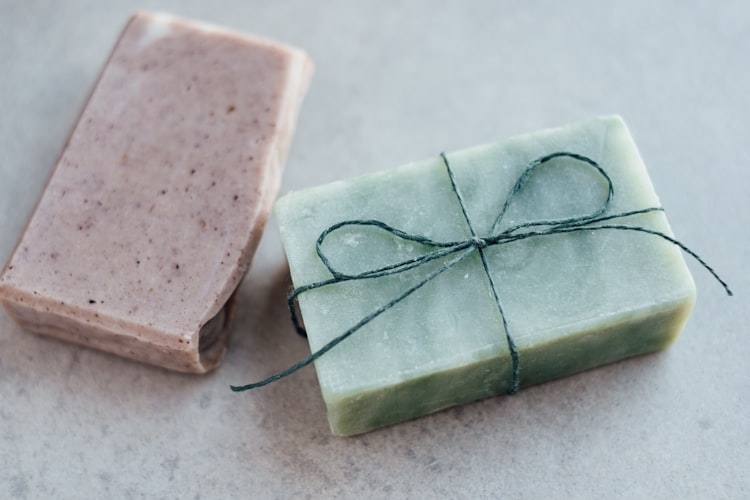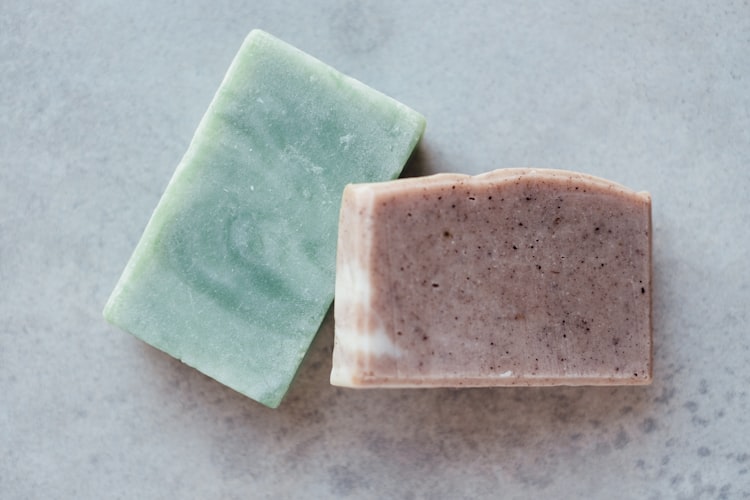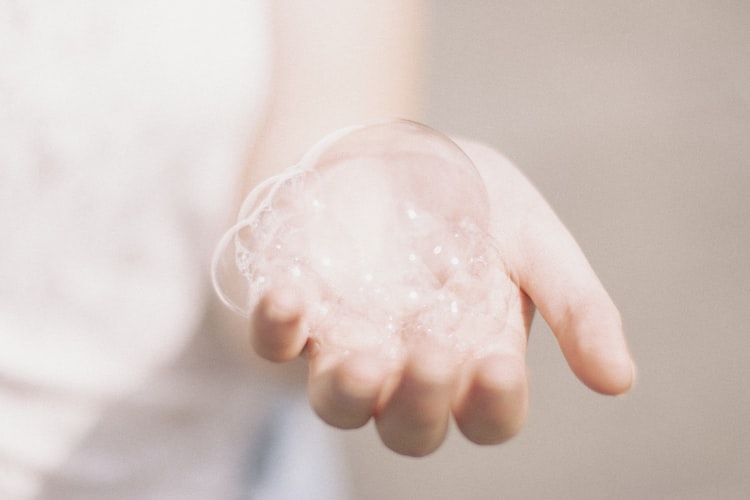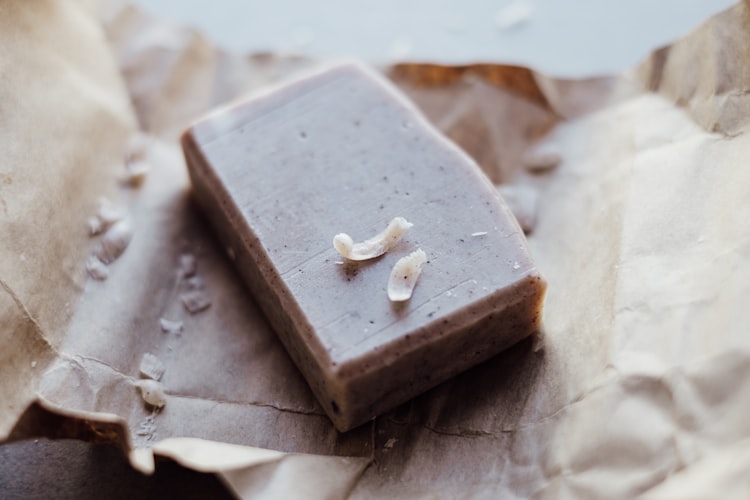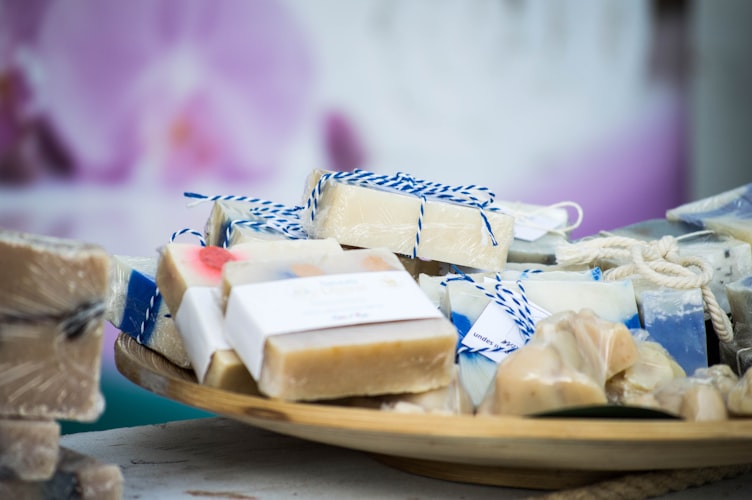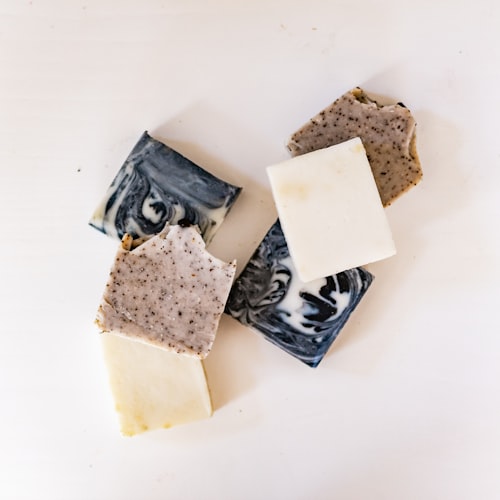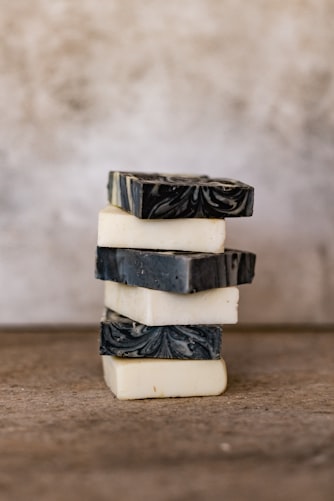
Soap is a regular part of our daily routine. We all have to clean ourselves and we usually rely on soap to create the foamy goodness for cleaning our bodies. Soap is useful, for it allows you to clean your bodies effectively, by removing sweat and dirt from the skin.
Though there are plenty of options to buy soap from stores and supermarkets, it isn’t difficult to make soap at home. The benefit of making soap at home is that you are able to make the soap as mild and gentle as you would like. Plus, it is super fun to make and is a rather cost-effective solution for many people. You have complete discretion to choose the ingredients and scents based on your preference. You have complete control of your soap, which is why it is great.
So how do you go about making soap at home? What would you need and what are the steps to follow? We will look to answer most of your questions surrounding the topic and will even leave you with 5 amazing recipes for you to try. Hence, keep reading this word to word.
What are the Ingredients for Homemade Soap?
There are some basic ingredients that you will have to pick up to ensure that you have everything at hand to make your soap. The basic set of ingredients include,
- animal fat or vegetable oil
- 100 percent pure lye
- distilled water
- essential oils
- colourants (optional)
Traditionally, soap is made from animal fat, but today, plant oils are a popular and widely used substitute. Depending on the fat or oil that you use, the hardness and lather of the soap will vary. There are various options of fats and oils that you can choose from, which include,
- Shea butter
- mango butter
- hemp oil
- cocoa butter
- jojoba oil
- avocado oil
- almond oil
- coconut oil
- olive oil
- tallow
- lard
Water is the base liquid of the soap and is an essential ingredient of the soap making process. It is what is used to make a lye solution which is then mixed with the oil. Water is an essential part of the saponification process, however, when the soap hardens, most of the water that you had added would have evaporated.
Though water is the general recommendation for use, some soapmakers use other liquids such as tea, coffee, beer, goat’s milk and coconut milk. However, if you are a beginner, these options would be difficult to work with, hence we advise you to stick to water for your first try. You can obviously experiment with the ingredients once you have a good idea of what you need to do.
The essential oils are the fragrances that will give the soap the smell that you enjoy. Technically, soap really doesn’t need a smell to clean your body. Hence, though we included essential oil to give the soap a beautiful smell, it isn’t entirely necessary. However, if you would like to add a beautiful smell to your soap, use some essential oil or fragrance oil. You can combine different essential oils to make custom aromas. Since fragrance oils are synthetic, you want to ensure that when you pick fragrance oils that are skin-safe options.
Supplies You Would Need to Make Soap
Once you have a good idea of the ingredients that you need and have them at hand, you would also want to ensure you go about collecting all the necessary supplies that you would need to make soap with. The basic soapmaking supplies usually include the following,
- slow cooker
- a container for measuring lye
- heavy duty container for mixing lye
- digital kitchen scale
- silicone spatulas
- immersion blender
- candy thermometer
- silicone loaf mold
- soap cutter
You would also want to make sure that you stay safe during the soapmaking process, hence for your own safety, you would also need to collect some safety goggles, some rubber gloves, an oven mitt, a long-sleeved shirt to protect you arms and an apron. Make sure to carry out the soapmaking process in a well-ventilated area.
Once you have all the necessary supplies at hand, it would be good to understand a little better about the two main processes of soap making, hot process and cold process.
Hot Process and Cold Process of Soapmaking
There are broadly two methods that you choose to make soap from scratch. These methods are known as the hot process and the cold process.
The hot process takes about a week for the soap bar to harden, while the cold process will take about 4 to 6 weeks. The cold process uses internal heat that is naturally produced during the process of soapmaking, while the hot process actually uses an external heat source. While the cold process takes more time, the hot process yields result faster.
The cold process doesn’t require an external heat source. All you have to do is measure the ingredients accordingly and combine them well. The combination of ingredients have to be poured into a mould and allowed to form into soap before slicing them into bars.
How do you Make Homemade Soap for Beginners? (Cold Process)
For beginners, the cold process feels like less work, which is why we are discussing only the cold process in this segment of the article. We will discuss the hot process further down this article when we talk about the step by step process of making soap.
In order to make soap using the cold process, the first thing that you want to do is mix the lye and water and allow the mixture to cool. You want to use about 4.78 oz of pure lye and mix it with about 9 oz of distilled water. Ensure to maintain the proportion when you are scaling up or down your soapmaking. Mix them well and set them aside to cool.
You want to then melt the oils and have the oils ready. You can use about 20 oz of coconut oil and 10 oz of olive oil for this mix. Once the oil is melted, set it aside and allow the oil to cool. Once cool, you want to blend the lye solution and the oil to form the batter for your soap. Once the batter is ready, you are ready to pour the batter into the mould. Once in the mould, you want to allow sufficient time for the soap to harden. This could take anywhere between a day to a few weeks.
The soap should form within a day and you should be able to cut it before allowing it to cure for a time span of 2 to 3 weeks. Just make sure the batter has properly hardened before you go about cutting it.
There you go, it is that simple. Just mix, blend and pour into a mould and you have your soap ready. We didn’t include any essential oils or fragrances to keep the formula simple, however, you can add essential oils before blending to give the batter a nice smell.
How Can I Make Natural Soap at Home? (Without Lye)
So long as you are using natural ingredients, you are making natural soap at home. It is all in the ingredients that you use.
Soap made from coconut oil and essential oils is a good way to go when you are making natural soap. To note, natural soap should not contain lye, hence the recipe we provided above doesn’t really work.
Hence the best way to make all-natural soap at home is by using a soap base. You can find soap bases based on your preference and can easily find one that doesn’t contain lye. There are different kinds of soap bases; some contain olive oil while others use goats’ milk.
Once you have the soap base at hand, you want to melt the soap base and add you’re essential oils to the mix and pour the mixture into a mould and allow it to harden. Use a silicone mould for ease of use.
How to Make Soap, Step by Step (Hot Process)
The hot process requires more of a step by step process to understand exactly what you need to do. The process yield results much faster, however, this method has more steps than the cold process method for making soap.
We will be using a mix of coconut oil and olive oil for this example.
Step 1
The first thing that you would have to do is measure your ingredients in containers and put on your safety gear. You will be using external heat, hence it is important that you have your safety gear on.
Step 2
Turn on the slow cooker and turn it to low. Then add the coconut oil into the slow cooker. Allow the coconut oil to melt.
Step 3
With the coconut oil melting, you want to prepare the lye and water solution. Slowly mix the lye with the water. Do not add water to the lye as this can be unsafe. Always add lye to water. Carefully stir the solution as you add the lye using a spatula. The lye and water solution will start to get hot and start to release fumes; this is normal.
Step 4
Once the lye solution is ready, you want to allow the lye solution to cool. Set it aside and allow it to cool for about 15 to 20 minutes
Step 5
Check the slow cooker and see if the coconut oil has completely melted. If so, it is time to add the olive oil. Add the olive oil into the slow cooker and stir it well to combine the coconut and olive oil.
Step 6
When the temperature of the oils reach 120° to 130°F (49° to 54°C), get a hold of the immersion blender and place it on the side of the slow cooker. Gently pour the contents of the lye solution in and ensure to avoid splashing. Slowly stir the contents.
Step 7
Keep the blender on low and stir the mixture. Ensure to keep the blender immersed to ensure that bubbles do not form.
Step 8
You should continue to blend and stir for about 10 to 15 minutes allowing the soap to reach trace. This is when the oils and lye solution has emulsified and they start to look like pudding.
Step 9
Cover the slow cooker and allow it to cook on low for about 50 minutes. If the mixture starts to bubble, give it a gentle stir.
Step 10
Turn the slow cooker off and allow the mixture to cool until it drops below 180°F (82°C).
Step 11
If you are using essential oils, add the essential oil to the mixture and mix it well.
Step 12
Pour the mixture into the mould of choice, smooth the top with a spatula and tap the mould on a hard surface to remove any air bubbles. If you would like to, you can now top the soap with some dried herbs.
There you go, the step by step process that is used to make soap using the hot process. Follow each step at a time. If you don’t have a slow cooker, you can use a stovetop and it works just as well to ensure the soap is formed properly. So long as there is a constant heat source, the soap will turn out fine.
Recipes for Homemade Soap
There really are so many recipes you can follow to make some amazing soap. With a handfull of ingredients and essentil oils, you can make various types of soap based on your personal preference. The trick is understanding the basics of the soapmaking process. Once you have the basic understanding in place, you can experiment with fragrances and base components to make your own soap. To get you started, here are 5 soap recipes that you should try.
1. Citrus Soap
This recipe uses a goat’s milk melt to make the soap which means it’s easier to make. All you need is some goat’s milk melt and pour base, some citrus essential oils and some dried citrus slices.
You want to dry your citrus slices and ensure that the slices fit the mould that you are using. Use the soap base to make the melt and use a microwave to melt the soap base chunks into a nice batter.
Add some citrus essential oils and stir them well before adding them to the mould with the dried citrus slices. It is that simple.
2. Skin Nourishing Soap
Some soaps are simply better for your skin. This recipe uses two quality kinds of butter as ingredients. We use a combination of both cocoa and Shea butter.
The recipe works to soothe the skin and nourish it. The soapmaking process relies on the hot process, hence you would need all the stuff we mentioned further up this list.
As the base, we use
- 6 oz of cocoa butter
- 5 and 1/2 oz of shea butter
- 15 and 1/2 oz of coconut oil
- 4 and 1/2 oz of lard (or palm oil for vegetarians)
- 11 oz of olive oil
- 2 oz of castor oil
- 2 oz of essential oils
- 12 and 1/2 oz of distilled water.
- 6 oz lye flakes
First, you want to melt the oils and make the mixture. Add the various components into the mix and continue to heat the mixture until everything is completely melted. You want to add the olive oil and castor oil at the end once everything else is ready. Once the oils are ready, you want to prepare the lye solution by adding the lye into the water and mixing it well. Once ready, add it to the oils and stir if the mixture starts to bubble.
Add the essential oils and stir well before pouring the mixture into the mould. Allow the mixture to cool and form and you will have your soap ready to slice into bars.
3. Exfoliating Soap
For this, you need to use a loofah. You want to cut the loofah of choice into pieces that are right for the mould. Then you want to use a soap base and melt the soap base and mix it with essential oils of choice.
Once the mixture is ready and the loofah is cut up, you want to pour the soap on top of the loofah in a mould. The soap will form around the loofah and will provide as an excellent exfoliator.
It isn’t hard to make. Especially when you are using a soap base to make your soap with.
4. Tea Soap
This green tea and lemongrass soap has an amazing fragrance and can make you feel as if you went to the spa. What you need is steeped green tea leaves and a bit of lemongrass oil for extra freshness and healing.
You can use palm oil, coconut oil, cocoa butter, olive oil, castor oil, soybean oil, sunflower oil and other oils as the base of this soap. Mix the oils based on preference and make a separate lye solution.
Just as we did before, mix the lye solution with the oils and stir and not allow bubbles to form. What you want to do is add a good portion of strongly brewed green tea and a few tablespoons of steeped green tea leaves into the mix.
Then top it off with some lemongrass essential oil for added fragrance and you are set. Pour it into a mould and allow your soap to form.
5. Jelly Soap For Kids
This can be a great soap to make for the kids. Its giggly feel makes bath time fun for the kids.
You will need,
- 2 envelopes of unflavoured gelatin
- 1 teaspoon of salt
- 1/2 cup boiling water
- 1/2 cup liquid soap
- soap colouring (optional)
To make the soap, add water to a pan and allow the water to come to a boil. Then add salt and give it a good stir. Then empty the packets of unflavoured gelatin into a small bowl, add the salt water and stir well until the gelatin is dissolved. Add the 1/2 cup of liquid soap and stir well.
You want to spoon off any bubbles that form on the surface before pouring the mixture into a mould. Once in the mould, refrigerate for about 2 hours. There you go, you would have your jelly soap ready for your kid’s bath time.
Soapmaking at Home
Making soap at home can be a fun thing to do. It isn’t expensive and you get to experiment with all the scents and fragrances that you want.
Regardless of whether you choose the cold process or the hot process, soap making can be great for those who are looking to be self-reliant and take on the task of making thier own soaps.
It is a practical skill and an amazing way to make gifts for your loved ones. People would love some handmade, homemade soap. After all, they are loaded with natural and aromatic products.
It isn’t hard making soap from scratch. Sure the first time around maybe a little tricky, but once you get the hang of it, it is no different to making stew.
We hope reading this word to word has informed you well of what you should be doing in order to make soap in the comfort of your home. We tried to cover all the basics that you would require to prepare yourself for the soap making process.
Remember, when using the hot process, though a slow cooker is the best way to go, you can quite easily make your soap using your stove as well. Hence, try your hand at your first bars of soap and see how it goes. Before you know it, you will be making your own recipes with your own ingredients.
Happy Soapmaking!



